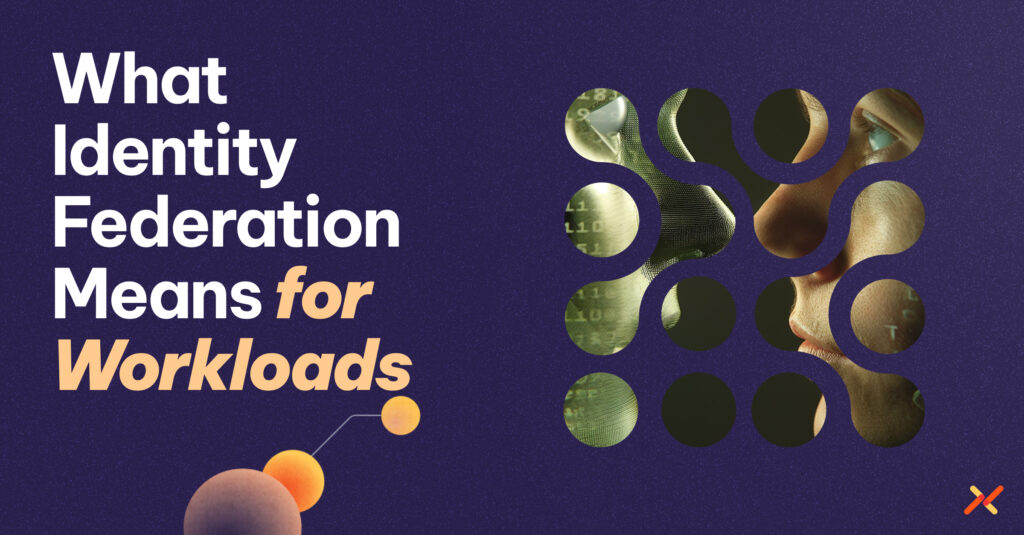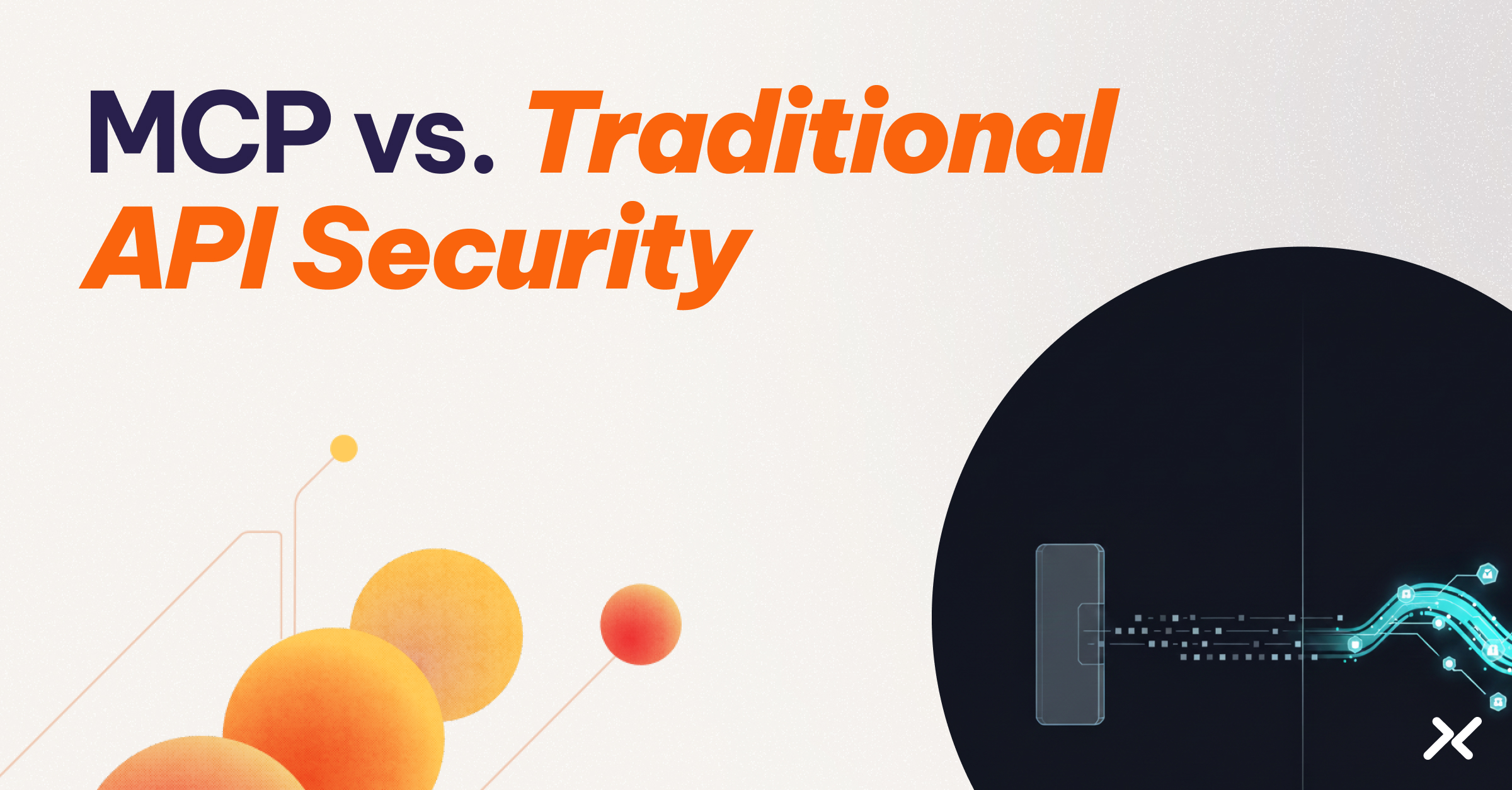Managing identity across cloud providers used to be a human problem – think SSO portals and workforce identity sync. However, as infrastructure becomes more automated, the real fragmentation now resides between workloads: CI/CD pipelines authenticating to SaaS tools, containers accessing APIs, and jobs calling into services across clouds.
Each environment has its identity system, and none of them talk to each other out of the box. So teams patch together secret vaults, duplicate identities, or accept over-permissioned access just to get things working.
The result: secrets sprawl, audit headaches, and brittle configurations.
Identity federation offers a different model – one where systems can verify each other’s identities and grant access without needing hardcoded secrets or pre-provisioned accounts.
Understanding Identity Federation for Non-Human Access
Identity federation is the process of allowing one identity system to validate identities issued by another. Instead of duplicating accounts or sharing credentials, a system can trust an external source to assert identity and base access decisions on that trust.
This capability already exists in most major cloud platforms and can be implemented directly with native tools and standards. However, the operational complexity of configuring and scaling federation across environments often drives teams to look for ways to automate and simplify it.
In workforce identity, federation is familiar: users log in through an SSO provider, which brokers identity to downstream apps. But federation isn’t just for humans.
For non-human identities, federation enables one system to recognize a workload identity from another domain, apply policy, and grant access without requiring the provisioning of local credentials or service accounts.
Critically, federation doesn’t require centralizing all identities. It simply allows systems to speak a common trust language, enabling access to be granted based on verified identity and contextual policy, rather than static secrets or duplicated roles.
Why Traditional Federation Models Don’t Work for Workloads
Most organizations are familiar with identity federation in the workforce context. SAML, OIDC, and SSO make it easy for users to authenticate across tools without managing separate accounts. However, these models were designed for human interaction, including browser redirects, login screens, and session tokens.
Workloads don’t work like humans. They don’t open browsers, click login buttons, or respond to MFA prompts. They’re automated, often ephemeral, and distributed across environments, making traditional, interactive authentication models a poor fit.
While it’s possible for any workload to hold long-lived credentials, doing so introduces major security risks, especially when workloads are short-lived, autoscaled, or deployed across multiple teams and clouds.
Instead, modern systems use identity assertions at runtime, often leveraging protocols like OIDC. Tools like Aembit adapt standards such as OIDC to support the dynamic, autonomous nature of workloads at scale, without relying on brittle, pre-provisioned secrets.
These models may work for stable, monolithic environments, but they break down when applied to dynamic workloads that spin up and down automatically, span clouds, or shift frequently between teams. Without automation and contextual trust, access becomes brittle, insecure, and hard to audit.
Workload federation helps close these gaps by enabling:
- Dynamic identity verification: While some manual provisioning (such as account creation within a cloud provider) may still be required, federation allows identities to be verified at runtime.
- Policy-based access control: While basic identity federation allows trusted systems to verify and accept external identities, it doesn’t include contextual policy evaluation out of the box. That’s where platforms like Aembit build on federation, adding posture-based access controls and automation to make it more powerful and easier to operate at scale.
How Federation Simplifies Credential Management
When systems can’t verify external identities, teams often resort to copying secrets across environments, creating redundant service accounts, or hardcoding credentials into pipelines just to get workloads talking.
These short-term fixes create long-term liabilities:
- Credentials spread across tools and teams with no single source of truth.
- Revoking access becomes messy and error-prone.
- Rotation procedures break down as secrets multiply.
- Response time in the event of an incident increases.
- Audit trails fragment, making compliance difficult.
Federation avoids these pitfalls by enabling trusted identity verification at runtime. Instead of duplicating identities everywhere access is needed, workloads can present a verifiable identity that’s recognized across boundaries.
This shift delivers real operational benefits:
- No need to inject or sync secrets across environments.
- Credentials are short-lived.
- Policy is enforced dynamically, based on verified identity and context.
Federation simplifies both access and governance, reducing friction for developers and risk for security teams.
The Challenge of Scaling Federation for Workloads
While identity federation offers a more secure model for managing non-human access, it introduces new complexity for application and infrastructure teams.
Unlike traditional models that rely on injected credentials, federation requires each workload to be explicitly built to handle identity flows.
That includes communicating with identity providers, responding to attestation challenges, and performing token exchanges to go from verified identity to access.
This means every application must be federation-aware, managing tokens securely, renewing them at runtime, and integrating with the federation control plane. Without the right abstractions, this complexity can slow down teams and increase the risk of misconfiguration.
To scale federation effectively, organizations need ways to automate these identity workflows and abstract the complexity away from developers, making federation usable without requiring every team to become identity experts.
The Workload IAM Company
Manage Access, Not Secrets
Boost Productivity, Slash DevSecOps Time
No-Code, Centralized Access Management
How Workload Federation Works in Practice
Workload identity federation involves two core phases: establishing trust between identity systems and then executing runtime access flows.
This approach enables a workload from one environment (e.g., GitHub Actions, AWS EC2) to securely authenticate and gain temporary access to resources in another cloud environment (e.g., Google Cloud, Azure) without exchanging static credentials.
1. Establishing Trust (Configuration Steps)
Before workloads can federate identities, you must configure a trust relationship between your external identity provider and the target cloud environment. This is a one-time setup that defines which external identities are allowed to authenticate and under what conditions.
Configure External Identity Provider
If using a CI/CD platform or cloud-native compute environment, configure its OIDC provider to issue signed identity tokens. This includes defining the expected aud (audience) claim that the target cloud will validate.
- In Google Cloud, the audience should match the full Workload Identity Provider resource name.
- In AWS, the expected audience is typically sts.amazonaws.com.
- In Azure, audience values vary by tenant and application setup (e.g., api://AzureADTokenExchange).
Configure Target Cloud Trust
Each cloud handles identity federation differently:
- Google Cloud uses Workload Identity Pools and Providers, configured with the external OIDC issuer URL (e.g., https://token.actions.githubusercontent.com for GitHub).
- AWS requires setting up an IAM Identity Provider that links to the external OIDC issuer.
- Azure supports federation through Entra ID by registering external IdPs and linking them to service principals.
Define Authorization Policies
You must explicitly grant the external identity permission to act within the cloud environment:
- In GCP, grant roles/iam.workloadIdentityUser on a service account.
- In AWS, add a trust policy to an IAM role that permits AssumeRoleWithWebIdentity based on specific token claims (e.g., sub, ref).
- In Azure, create federated credentials associated with a service principal or managed identity, scoped to expected token claims.
These policies ensure that only workloads with valid, attested identities can assume roles or impersonate service accounts to access cloud resources.
Depending on the cloud, applications may use native SDKs or client libraries to automatically exchange tokens and sign API requests, or they can call REST APIs directly. This requires updating code to request and handle short-lived credentials at runtime.
2. Runtime Federated Access (Application/CI/CD Steps)
Once trust is established, workloads can dynamically authenticate and request access:
Acquire External Token
The application or CI/CD job retrieves a signed identity token from its native OIDC source.
- GitHub Actions workflows retrieve an OIDC token automatically.
- AWS EC2 instances use the instance metadata service.
- Azure workloads use managed identities or OAuth token flows.
These tokens contain verifiable claims that describe the workload’s identity (e.g., GitHub repo path, AWS role ARN, Azure object ID).
Exchange for Cloud-Specific Credentials
The workload presents its identity token to the target cloud’s Security Token Service (STS) or token exchange endpoint:
- In GCP, this is handled by the Security Token Service which issues a federated identity credential.
- In AWS, it’s AssumeRoleWithWebIdentity via STS.
- In Azure, the token is exchanged using Entra ID to authenticate the workload.
If the identity and claims match the configured trust and IAM policies, the cloud returns short-lived credentials scoped to the requested resource.
Access Cloud Resource
The workload uses the temporary credential to access cloud resources—e.g., calling GCP APIs as a service account, accessing S3 in AWS, or querying an Azure SQL database.
Automatic Expiration and Audit
All issued credentials are time-bound (typically valid for minutes to a few hours). They expire automatically, require no storage of static secrets, and are fully logged—supporting traceability, incident response, and compliance.
What Makes It Work
Workload federation removes the need to provision and rotate static secrets or maintain long-lived identities in every environment. Instead, workloads operate with ephemeral access based on trusted, verifiable identity assertions.
The model is effective because it’s built on:
- Attested identities — tokens reflect the real-time workload identity, not pre-provisioned accounts.
- Policy-based access control — IAM policies enforce access conditions tied to token claims.
- Short-lived credentials — no static secrets, and access automatically expires.
- Cross-cloud trust support — enables federated access without vendor lock-in.
- Centralized audit logging — every token exchange and API call is tracked with full context.
Aembit and the Role of Identity Federation
Identity federation is a powerful capability that can be implemented using native cloud tools and standards. Aembit builds on this foundation by abstracting complexity and layering on policy enforcement, secretless access, and observability.
It delivers a unified workload identity and access management platform that turns federation from a developer burden into a secure, zero-friction runtime capability.
Aembit acts as a federation hub across trust boundaries, enabling:
- One-time federation per environment, no need to manage service-by-service access
- Runtime policy enforcement based on workload identity and posture
- Short-lived or secretless credentials for every request
- Centralized logging for all access events and decisions
By automating the workload identity federation process, Aembit helps you scale federation without adding a heavy burden on your developers.
If you’re moving away from long-lived secrets or trying to make sense of workload access across clouds, federation is the right foundation, and Aembit helps make it practical.




